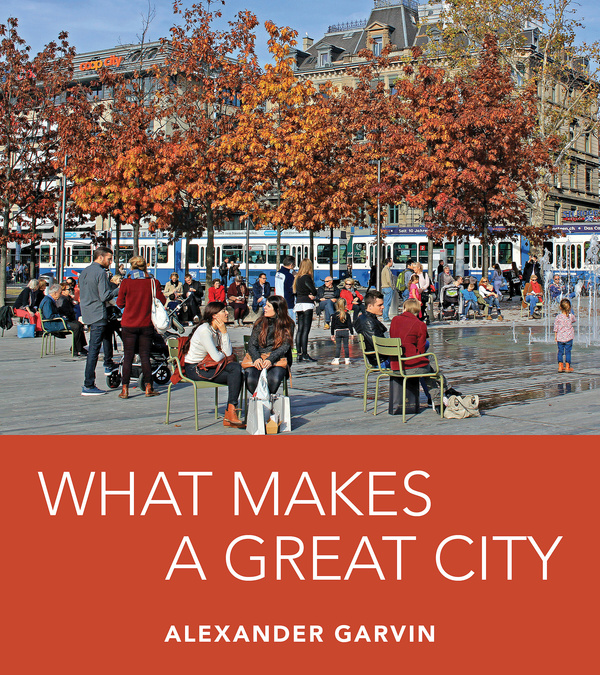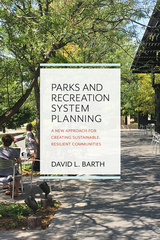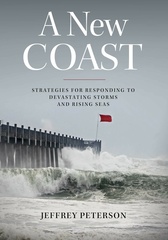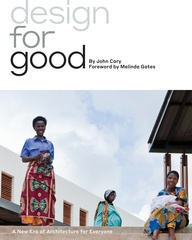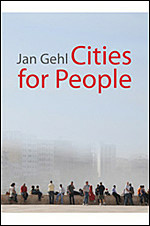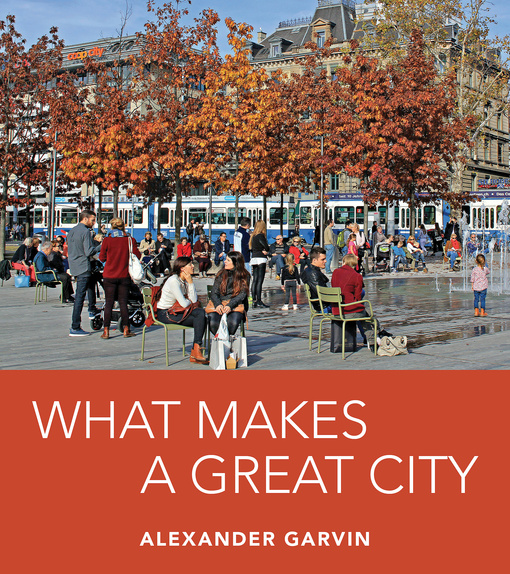
344 pages, 8 x 9
215 photos, 37 illustrations
Hardcover
Release Date:08 Sep 2016
ISBN:9781610917575
One of Planetizen's Top Planning Books for 2017 • San Francisco Chronicle's 2016 Holiday Books Gift Guide Pick
What makes a great city? Not a good city or a functional city but a great city. A city that people admire, learn from, and replicate. City planner and architect Alexander Garvin set out to answer this question by observing cities, largely in North America and Europe, with special attention to Paris, London, New York, and Vienna.
For Garvin, greatness is not just about the most beautiful, convenient, or well-managed city; it isn’t even about any “city.” It is about what people who shape cities can do to make a city great. A great city is not an exquisite, completed artifact. It is a dynamic, constantly changing place that residents and their leaders can reshape to satisfy their demands. While this book does discuss the history, demographic composition, politics, economy, topography, history, layout, architecture, and planning of great cities, it is not about these aspects alone. Most importantly, it is about the interplay between people and public realm, and how they have interacted throughout history to create great cities.
To open the book, Garvin explains that a great public realm attracts and retains the people who make a city great. He describes exactly what the term public realm means, its most important characteristics, as well as providing examples of when and how these characteristics work, or don’t. An entire chapter is devoted to a discussion of how particular components of the public realm (squares in London, parks in Minneapolis, and streets in Madrid) shape people’s daily lives. He concludes with a look at how twenty-first century initiatives in Paris, Houston, Atlanta, Brooklyn, and Toronto are making an already fine public realm even better—initiatives that demonstrate what other cities can do to improve.
What Makes a Great City will help readers understand that any city can be changed for the better and inspire entrepreneurs, public officials, and city residents to do it themselves.
What makes a great city? Not a good city or a functional city but a great city. A city that people admire, learn from, and replicate. City planner and architect Alexander Garvin set out to answer this question by observing cities, largely in North America and Europe, with special attention to Paris, London, New York, and Vienna.
For Garvin, greatness is not just about the most beautiful, convenient, or well-managed city; it isn’t even about any “city.” It is about what people who shape cities can do to make a city great. A great city is not an exquisite, completed artifact. It is a dynamic, constantly changing place that residents and their leaders can reshape to satisfy their demands. While this book does discuss the history, demographic composition, politics, economy, topography, history, layout, architecture, and planning of great cities, it is not about these aspects alone. Most importantly, it is about the interplay between people and public realm, and how they have interacted throughout history to create great cities.
To open the book, Garvin explains that a great public realm attracts and retains the people who make a city great. He describes exactly what the term public realm means, its most important characteristics, as well as providing examples of when and how these characteristics work, or don’t. An entire chapter is devoted to a discussion of how particular components of the public realm (squares in London, parks in Minneapolis, and streets in Madrid) shape people’s daily lives. He concludes with a look at how twenty-first century initiatives in Paris, Houston, Atlanta, Brooklyn, and Toronto are making an already fine public realm even better—initiatives that demonstrate what other cities can do to improve.
What Makes a Great City will help readers understand that any city can be changed for the better and inspire entrepreneurs, public officials, and city residents to do it themselves.
Imagine you're a renowned author, an adjunct member of the faculty at Yale University, and the president of AGA Public Realm Strategists. Would you be surprised if you found yourself unable to answer a question about the fundamental nature of cities? That was the dilemma facing Alexander Garvin as he pondered a question from a friend: 'What makes a great city?' Given the resources afforded to someone with the aforementioned accomplishments, Garvin set out to answer the question by traveling the world and identifying the common traits of great cities. His conclusion: people make cities great, and only in cities with great public realms do people have the opportunity to make a great city.
Garvin here explores the importance of public spaces to public life —and how a 'great' city, unlike a great painting or sculpture, is not an exquisite, completed artifact.
A well-researched and compelling treatise on how cities become and remain great, What Makes a Great City is something else as well: a love letter to the ideals of urban life at its best.'
For urbanists, planners, and architects who appreciate well-designed public spaces, Alexander Garvin’s latest publication delivers a carefully constructed tour of cities that accomplish this goal. He shows how they successfully created or enhanced parks, plazas, and squares or established a broader array of civic improvements to attract investment and enhance quality of life.'
For those who dream of spending a few days talking with an experienced planner who combines a detailed knowledge of many cities with a structure of thought to place those details in...well, that might not happen. Luckily, we have Alexander Garvin's What Makes a Great City. It's somewhat more personal, but no less rigorous, than his earlier books.
When I was the mayor of Miami, Alex Garvin inspired me to improve the city by enhancing its public realm--its streets, squares, and parks. Now, by reading What Makes a Great City, you, too, can be inspired to make the investments that will help your city prosper, compete in a globally competitive economy, and provide generations to come with a better future.
Hundreds of photo illustrations, good writing, and nice organization make What Makes a Great City a perfect volume to add to the libraries of city planners, architects, local politicans, and civic leaders.'
Garvin's previous books...are must-reads for all students of the city. In this latest book, he grabs the reader in the introduction by explaining how he came to write it: he was asked to name the cities he considers great and why. The result is a visual picnic, thanks to Garvin's gorgeous photographs...and an important addition to planning literature.
Only a great urban raconteur and connoisseur like Alex Garvin can lead you, with his observant eye and erudite mind, through such an enlightening journey. This is an absolute must-read for students and lovers of cities worldwide.
Garvin reveals the animating life force within cities from Barcelona to Brooklyn with the sharp eye of an architect, an anthropologist, and an economist, and with the ardent ability to distinguish great public places from mere space.
For cities and the public realm, Alexander Garvin is a modern-day Alexis de Tocqueville and Alexander von Humboldt wrapped together and tied up with a bow! His keen, wise observations, analysis, and insights in What Makes a Great City are a splendid gift to urbanites around the world.
Alex Garvin is currently an adjunct professor at the Yale School of Architecture and President and CEO of AGA Public Realm Strategists, Inc., a planning and design firm in New York City that is responsible for the initial master plans for the Atlanta BeltLine as well as other significant public-realm projects throughout the United States. Between 1996 and 2005 he was managing director for planning at NYC2012, the committee to bring the Summer Olympics to New York in 2012. During 2002–2003, he was Vice President for Planning, Design and Development of the Lower Manhattan Development Corporation. Over the last 46 years, he has held prominent positions in five New York City administrations, including Deputy Commissioner of Housing and City Planning Commissioner. He is the author of numerous books including The American City: What Works and What Doesn’t, now in its third edition.
Preface: What Makes a Great City
Chapter 1: The Importance of the Public Realm
Defining the Public Realm
Streets, Squares, and Parks
Beyond Streets, Squares, and Parks
Making Cities Great
Chapter 2: The Characteristics of the Public Realm
Open to Anybody
Something for Everybody
Attracting and Retaining Market Demand
Providing a Framework for Successful Urbanization
Sustaining a Habitable Environment
Nurturing and Supporting a Civil Society
Chapter 3: Open to Anybody
Overwhelmingly Identifiable, Accessible, and Easy to Use
Plaza Mayor, Salamanca, Spain
Creating an Identifiable, Accessible, and Easy-to-Use Public Realm
The Paris Metro
Federal Center, Chicago
Piazza del Campo, Siena, Italy
The Squares of Savannah
Sixteenth Street, Denver
Keeping the Public Realm Safe
Gran Via, Barcelona
Piet Heinkade, Amsterdam
The Streets of Paris
Feeling Comfortable
Jardin du Palais Royale, Paris
Commonwealth Avenue, Boston
Kungstradgarten, Stockholm
Via dei Condotti, Rome
Via Aquilante, Gubbio, Italy
Worth Avenue, Palm Beach
Levittown, Long Island
Forever Welcoming
Chapter 4: Something for Everybody
A Reason to Return Again and Again
Boulevard des Italiens, Paris
Jardin du Luxembourg, Paris
Washington Park, Chicago
Having Fun
Playgrounds
Piazza Navona, Rome
Animating a Multifunctional Public Realm
Market Square and PPG Place, Pittsburgh
A Place for Everything and Everything in Its Place
Central Park, New York City
Passeig de Gracia, Barcelona
Reclaiming Bits of the Public Realm for Public Use
Plenty of People
Chapter 5: Attracting and Retaining Market Demand
Using the Public Realm to Trigger Private Development
Place des Vosges, Paris
The Revival of the Place des Vosges
Regent’s Park, London
Avenue Foch, Paris
Enlarging the Public Realm to Accommodate a Growing Market
An Administrative Center for the Modern City of Paris
North Michigan Avenue, Chicago
Responding to Diminishing Market Demand by Repositioning the Public Realm
Kärntner Straße, Vienna
Bryant Park, New York City
Continuing Investment
Chapter 6: Providing a Framework for Successful Urbanization
Alternative Frameworks
Atlanta
Dubrovnik, Croatia
Rome
St. Petersburg, Russia
The Paris Street Network
Ringstrasse, Vienna
Radio-Concentric Moscow
Houston’s Highway Rings
The Manhattan Grid
Maintaining the Public Realm Framework
Thirty-Fourth Street, Manhattan
Determining the Location of Market Activity
Chapter 7: Sustaining a Habitable Environment
What Does It Take to Sustain a Habitable Environment?
Eastern Parkway, Brooklyn
Using the Public Realm to Create a Habitable Environment
Boston’s Emerald Necklace
Long Island’s Network of Parks, Beaches, and Parkways
Reconfiguring the Public Realm to Improve Habitability
The Public Squares of Portland, Oregon
New York City’s Greenstreets Program
Transportation Alternatives that Improve Habitability
Union Square, San Francisco
Post Office Square, Boston
Congestion Pricing in London
Congestion Targets in Zurich
An Ever More Habitable Public Realm
The Chicago Lakeshore
Reviving the San Antonio River
Operating the Public Realm
Park Management in New York City
An Ever-Improving Public Realm
Chapter 8: Nurturing and Supporting a Civil Society
The Nurturing Role of the Public Realm
The Streets of Copenhagen
Palace Square (Dvortsovaya Ploshchad), St. Petersburg
Red Square, Moscow
Ensuring that the Public Realm Continues to Nurture a Civil Society
Times Square, Manhattan
The Public Realm as a Setting for Self-Expression
Chapter 9: Using the Public Realm to Shape Everyday Life
Whose Realm Is It?
Determining the Daily Life of a City
The Squares of London
The Minneapolis Park System
The Madrid Miracle
The Key to Greatness
Chapter 10: Creating a Public Realm for the Twenty-First Century
The Patient Search for a Better Tomorrow
Place de la République, Paris
Post Oak Boulevard in the Uptown District of Houston
Brooklyn Bridge Park
Atlanta’s BeltLine Emerald Necklace
Waterfront Toronto
What Makes a City Great
Chapter 1: The Importance of the Public Realm
Defining the Public Realm
Streets, Squares, and Parks
Beyond Streets, Squares, and Parks
Making Cities Great
Chapter 2: The Characteristics of the Public Realm
Open to Anybody
Something for Everybody
Attracting and Retaining Market Demand
Providing a Framework for Successful Urbanization
Sustaining a Habitable Environment
Nurturing and Supporting a Civil Society
Chapter 3: Open to Anybody
Overwhelmingly Identifiable, Accessible, and Easy to Use
Plaza Mayor, Salamanca, Spain
Creating an Identifiable, Accessible, and Easy-to-Use Public Realm
The Paris Metro
Federal Center, Chicago
Piazza del Campo, Siena, Italy
The Squares of Savannah
Sixteenth Street, Denver
Keeping the Public Realm Safe
Gran Via, Barcelona
Piet Heinkade, Amsterdam
The Streets of Paris
Feeling Comfortable
Jardin du Palais Royale, Paris
Commonwealth Avenue, Boston
Kungstradgarten, Stockholm
Via dei Condotti, Rome
Via Aquilante, Gubbio, Italy
Worth Avenue, Palm Beach
Levittown, Long Island
Forever Welcoming
Chapter 4: Something for Everybody
A Reason to Return Again and Again
Boulevard des Italiens, Paris
Jardin du Luxembourg, Paris
Washington Park, Chicago
Having Fun
Playgrounds
Piazza Navona, Rome
Animating a Multifunctional Public Realm
Market Square and PPG Place, Pittsburgh
A Place for Everything and Everything in Its Place
Central Park, New York City
Passeig de Gracia, Barcelona
Reclaiming Bits of the Public Realm for Public Use
Plenty of People
Chapter 5: Attracting and Retaining Market Demand
Using the Public Realm to Trigger Private Development
Place des Vosges, Paris
The Revival of the Place des Vosges
Regent’s Park, London
Avenue Foch, Paris
Enlarging the Public Realm to Accommodate a Growing Market
An Administrative Center for the Modern City of Paris
North Michigan Avenue, Chicago
Responding to Diminishing Market Demand by Repositioning the Public Realm
Kärntner Straße, Vienna
Bryant Park, New York City
Continuing Investment
Chapter 6: Providing a Framework for Successful Urbanization
Alternative Frameworks
Atlanta
Dubrovnik, Croatia
Rome
St. Petersburg, Russia
The Paris Street Network
Ringstrasse, Vienna
Radio-Concentric Moscow
Houston’s Highway Rings
The Manhattan Grid
Maintaining the Public Realm Framework
Thirty-Fourth Street, Manhattan
Determining the Location of Market Activity
Chapter 7: Sustaining a Habitable Environment
What Does It Take to Sustain a Habitable Environment?
Eastern Parkway, Brooklyn
Using the Public Realm to Create a Habitable Environment
Boston’s Emerald Necklace
Long Island’s Network of Parks, Beaches, and Parkways
Reconfiguring the Public Realm to Improve Habitability
The Public Squares of Portland, Oregon
New York City’s Greenstreets Program
Transportation Alternatives that Improve Habitability
Union Square, San Francisco
Post Office Square, Boston
Congestion Pricing in London
Congestion Targets in Zurich
An Ever More Habitable Public Realm
The Chicago Lakeshore
Reviving the San Antonio River
Operating the Public Realm
Park Management in New York City
An Ever-Improving Public Realm
Chapter 8: Nurturing and Supporting a Civil Society
The Nurturing Role of the Public Realm
The Streets of Copenhagen
Palace Square (Dvortsovaya Ploshchad), St. Petersburg
Red Square, Moscow
Ensuring that the Public Realm Continues to Nurture a Civil Society
Times Square, Manhattan
The Public Realm as a Setting for Self-Expression
Chapter 9: Using the Public Realm to Shape Everyday Life
Whose Realm Is It?
Determining the Daily Life of a City
The Squares of London
The Minneapolis Park System
The Madrid Miracle
The Key to Greatness
Chapter 10: Creating a Public Realm for the Twenty-First Century
The Patient Search for a Better Tomorrow
Place de la République, Paris
Post Oak Boulevard in the Uptown District of Houston
Brooklyn Bridge Park
Atlanta’s BeltLine Emerald Necklace
Waterfront Toronto
What Makes a City Great

